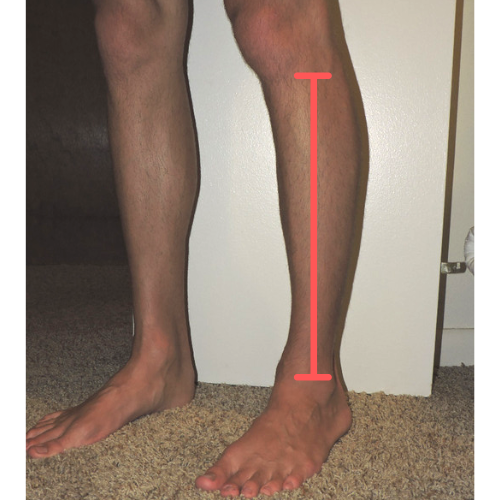This post may contain affiliate links. Please read the disclaimer for more info.
As I have mentioned earlier, my injury recovery process has been an interesting one. In the early stages of it, I remember dealing with mostly heel, ankle, and lower leg pain. Then, the arch of my foot and heels became the main problem. Now, I’m onto the achilles tendon and front of my ankle hurting the most.
I’ve also realized that the problem has changed for me or at least another one has been revealed. That process has been me dealing with some long term plantar fasciitis, only to find myself with a case of achilles tendonitis now as I have all the symptoms for it and my injured foot’s achilles feels unnaturally tight.
Luckily, I have found a release technique that addresses the areas I referred to (the tight achilles and the front side of the ankle), and it may come as a surprise to you that it does not involve rolling over the achilles tendon or even near it necessarily.
It actually involves rolling out your tibialis anterior muscle from the bottom of your knee to your ankle, just outside of your shin bone.
Who This Will Work For and Why
If you do a lot of running or hiking, especially uphill, this is going to be for you. When I first tried this technique, I found adhesions all the way down my tibialis anterior so I’ve had to keep revisiting this one.
For context, I play soccer, like hiking, and run for fun (preferably on uneven terrain like little hills and trails).
The reason why activities like this can cause achilles tendonitis is because of a concept called reciprocal inhibition. In short, this means that your achilles tendon and your tibialis anterior rely on each other to generate force and handle different movements.
When you are running uphill, your achilles has to contract and your tibialis anterior has to stretch when you push off. When you land, your achilles has to stretch and your tibialis anterior has to contract.
So what they share is an inverse relationship with each other where each is performing the opposite function as the other to make sure you can complete the movement.
To put everything together, if your achilles cannot contract like it needs to to propel you forward, it could be because the tibialis anterior is too tight to let that movement happen. This is why you may be getting pain in your achilles or feel that its movement to stretch is very limited.
Your body might be signalling that your tibialis anterior is too tight and doing this movement at a full range of motion is a serious risk of injury for you.
A Major Contributor to Achilles Tendonitis
Another problem is that if you are in a hiking boot or a padded running shoe (like most are), your tibialis anterior is getting forced into a state of contraction that it would not naturally sit in.
This is coupled with the fact that your calf muscles cannot contract as much as they need to when you’re pushing off because the sole of the shoe is too stiff and won’t allow you to.
An easy solution to this is a pair of minimalist shoes which combat all these issues with a thin and flexible sole that allows your calves to contract when you push forward.
They also have less of a toe spring at the front which means that your toes won’t be pointing upward like they do at the end of all traditional shoes, causing the tibialis anterior to be contracted even though it shouldn’t be.
It’s just not natural to have your toes constantly pointed upward, forcing your tibialis anterior into contraction even when you’re not moving uphill.
The Release Technique
The myofascial release technique involves taking a firm massage ball and some kind of stable platform that’s about level with your knee (I’m using a chair on carpet) and rolling out your tibialis anterior muscle.
The ball should be leaning against your shin bone but not on it. We’re aiming for the muscle that runs very closely alongside it on the outside of each leg.

Make sure to cover everything from the bottom of your knee to your ankles. If you’re someone who does any kind of trail running, uphill hiking, hill running, etc, you should be finding adhesions from top to bottom along this muscle.
I had a lot of crinkly junk right around the ankle area where I was already having some pain so it felt good to focus on that area for me. Typically, the adhesions that are restricting the achilles fascia and causing achilles tendonitis will be right in the middle of the lower leg or where we usually call our shins.
Notice how I am pointing my toes out for short periods and then I am pulling them back in. This is what you want to do while you are sitting on a tender spot because you want to simulate engaging the muscle like you would in a real situation while pinning the fascia and forcing those adhesions to release.



Leave a Reply